In Klingenberg, on the steep slopes high above the Main River, lie the vineyards of several Churfranken vintners. The museum vineyard in Klingenberg, which is cultivated by winemaker Anja Stritzinger, can also be found there.
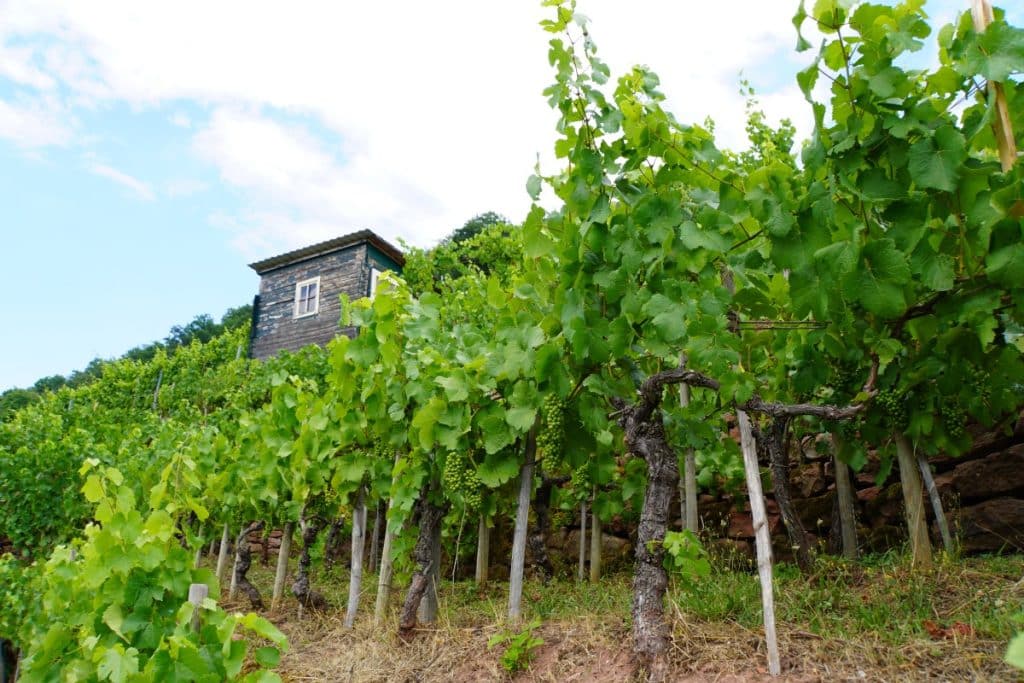
Peculiarity of the Klingenberg wine growing area
The vineyards in Klingenberg are located in old transverse terraces along the Main River. Mentions of the region’s wine have been found, suggesting that the oldest terraces date back to the 12th century.
If you wander through the terraces, you will notice the many stone walls. Each individual terrace is bounded by the wall, which is about 1 meter high, and one can climb up the slope via unevenly laid steps. The walls have been under monument protection since 1986, which means for the winegrowers that, for example, repair work may only be carried out with red red sandstone in dry construction and new construction is not possible.
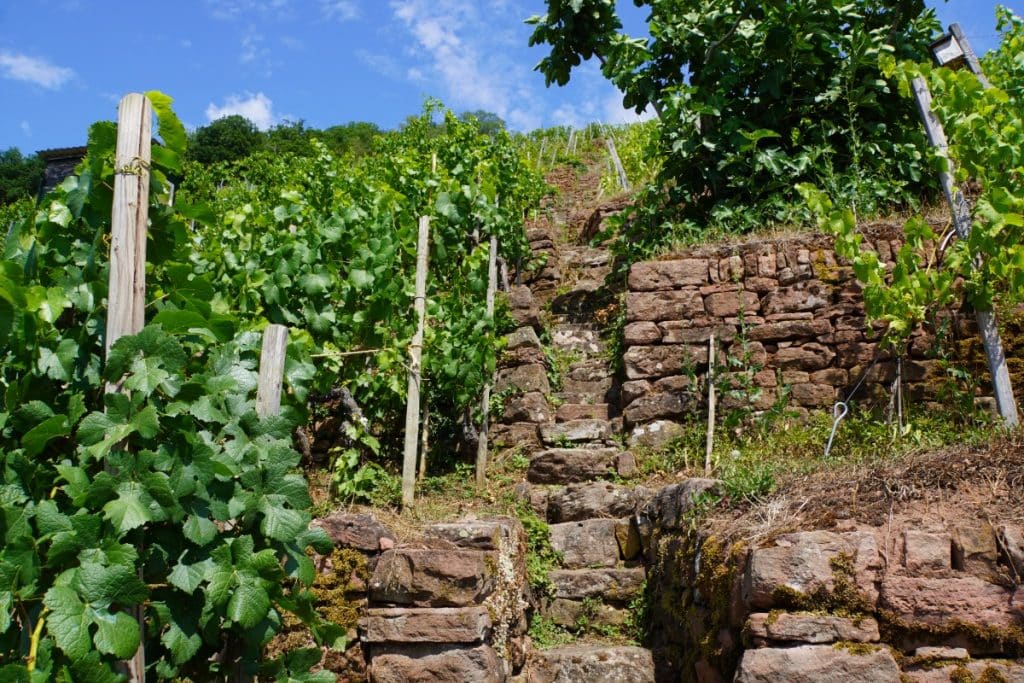
The steep slope makes the cultivation of the vineyard particularly difficult. Here, everything has to be done by hand. For the winegrowers, this means not only constantly climbing the 250 or so steps up the slope, but also transporting the grapes and watering them can only be done by hand. It takes a good 2,000 working hours per hectare per year for all the work that has to be done.
Of course, the climate also plays a decisive role for winegrowing in Klingenberg. Winters are usually mild and summers have not been too hot so far. So far, the amount of precipitation has also been higher than in the rest of the Franconian region. Here on the slopes, the temperature is always about 1 degree higher than in other areas. Thus, the growth of the vines starts earlier, the grapes ripen earlier and the harvest can also take place a little earlier.
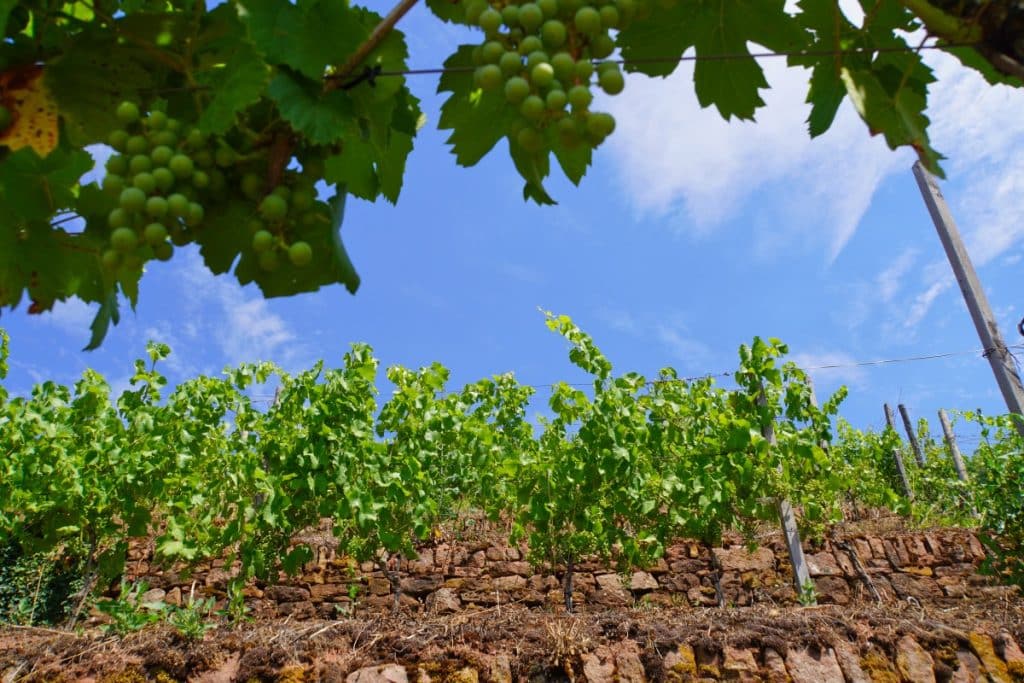
Soil naturally also plays an important role in viticulture. In Klingenberg, one finds red sandstone weathered soils.
The museum vineyard in Klingenberg
Until the beginning of the 20th century, many vineyards were planted with different grape varieties. Everyone could plant the vines that he liked. So it happened that when vines had to be replaced, the winegrower planted what was available. It even turned out to be advantageous if he used 5-10 different grape varieties. In this way it was possible to compensate for differences in quality and quantity.
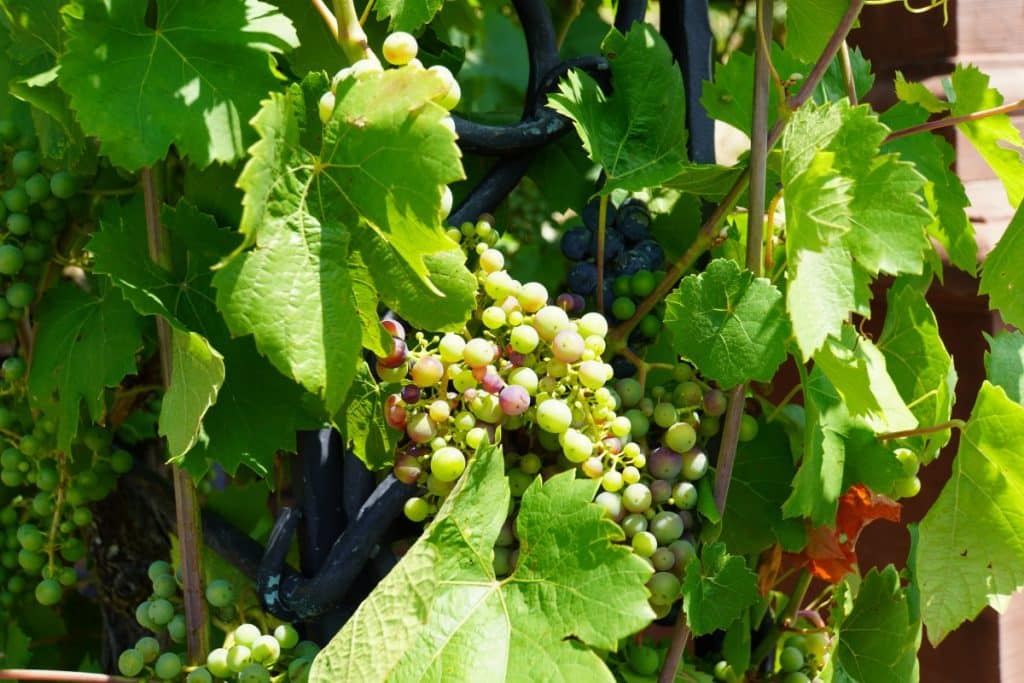
In Franconia there are still some of these very old vineyards. Some of them are located in landscape niches that have been spared from land consolidation measures and are already older than 50 years.
On the listed terraces of the Klingenberger Schlossberg, high above Klingenberg, there was a rather overgrown area for many years. In 2007, this area began to be cultivated and in the process, grape varieties were discovered whose classification has not yet been precisely clarified in part. A part of the “Alten Satz” could be identified exactly. For example, the Red Franke, the Black Urban, the Blue Cologne or the Affenthaler can be found in the museum vineyard in Klingenberg. Some of the vines are almost 100 years old.
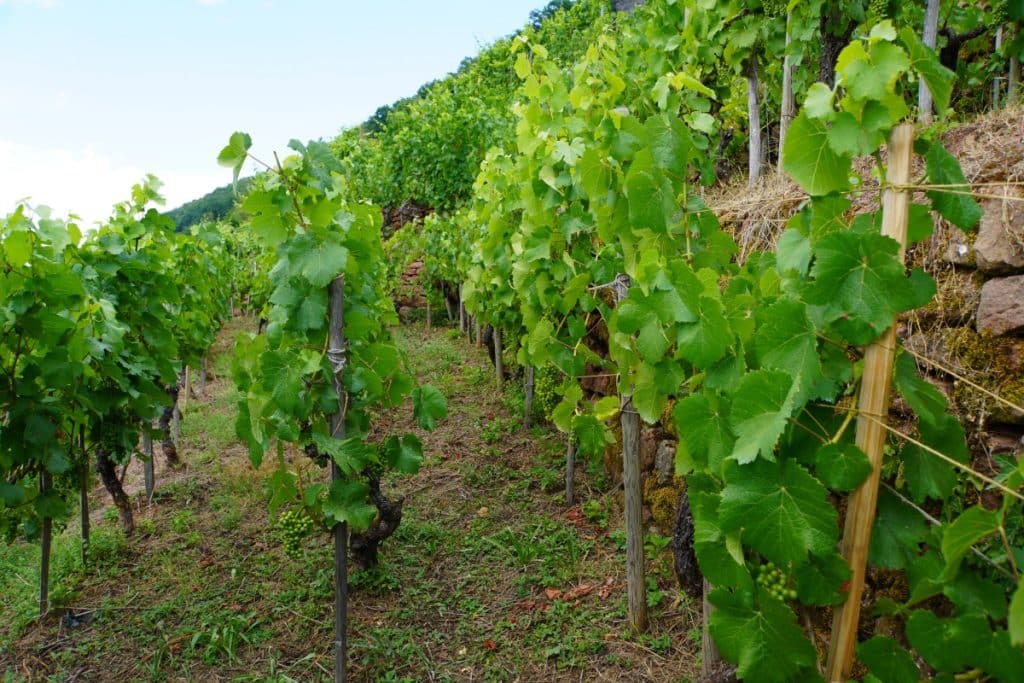
In the museum vineyard, the vines still grow according to “old upbringing”. In the “old upbringing”, the vine is flanked by two stakes each. The so-called cane grows around the stakes and the shoots are tied with a jute cord. In addition, they are culled earlier (i.e. cut off at the top) than in modern planting. Today, the shoots of vines are tied on wires between the canes.
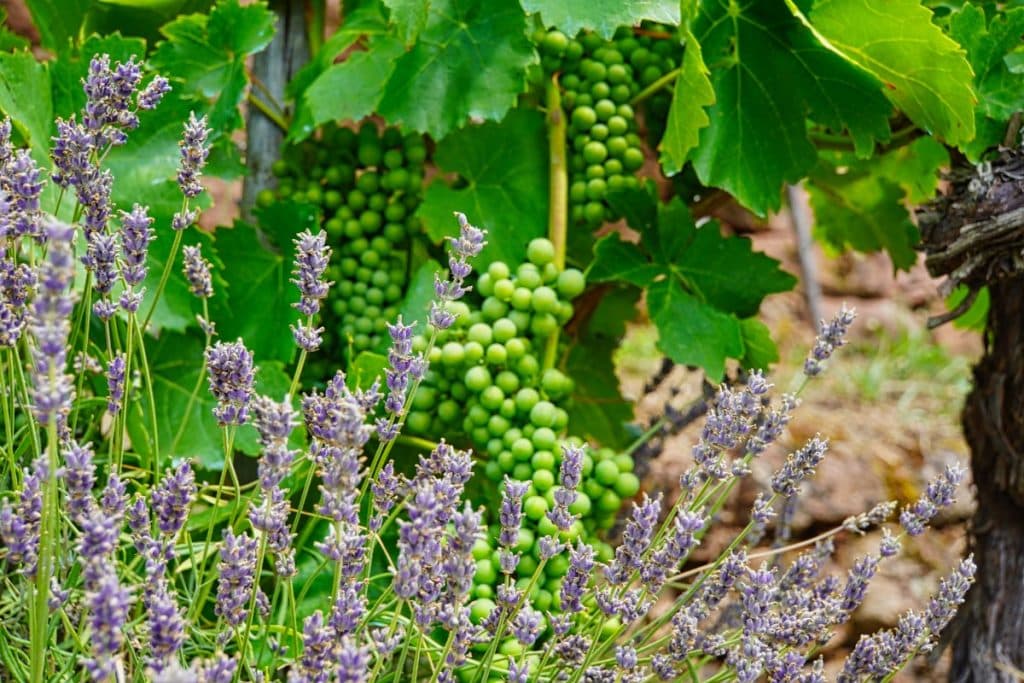
Today the vineyard is managed under biological aspects. Between the vines is a diverse flora and fauna. Those who know something about herbs can discover many wild herbs.
In Klingenberg there are about 20 different vines with red grapes and some vines with white grapes in the museum vineyard.
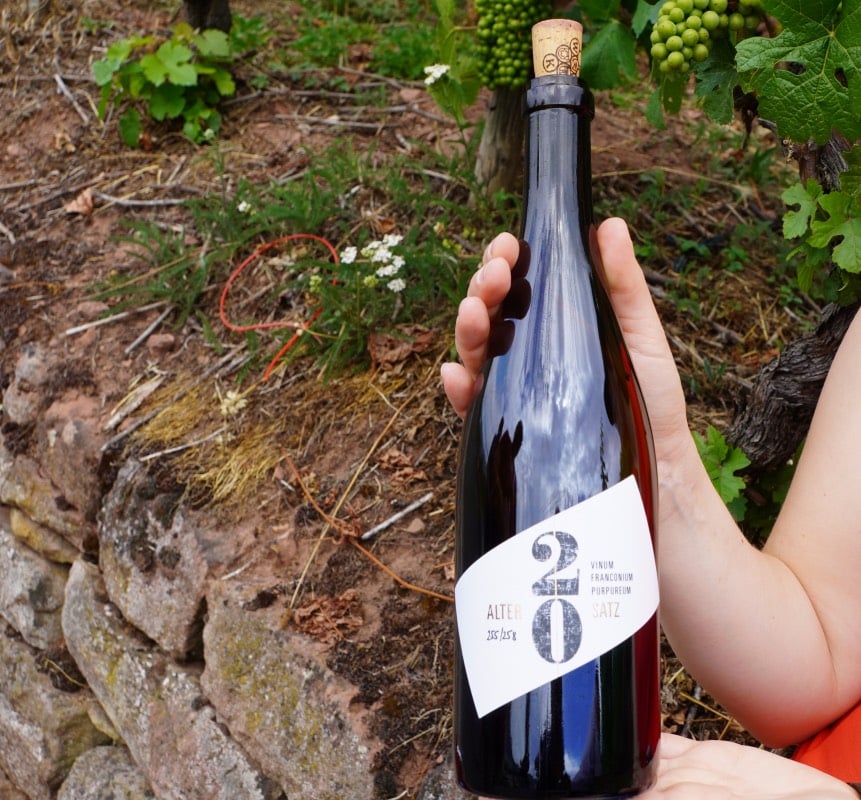
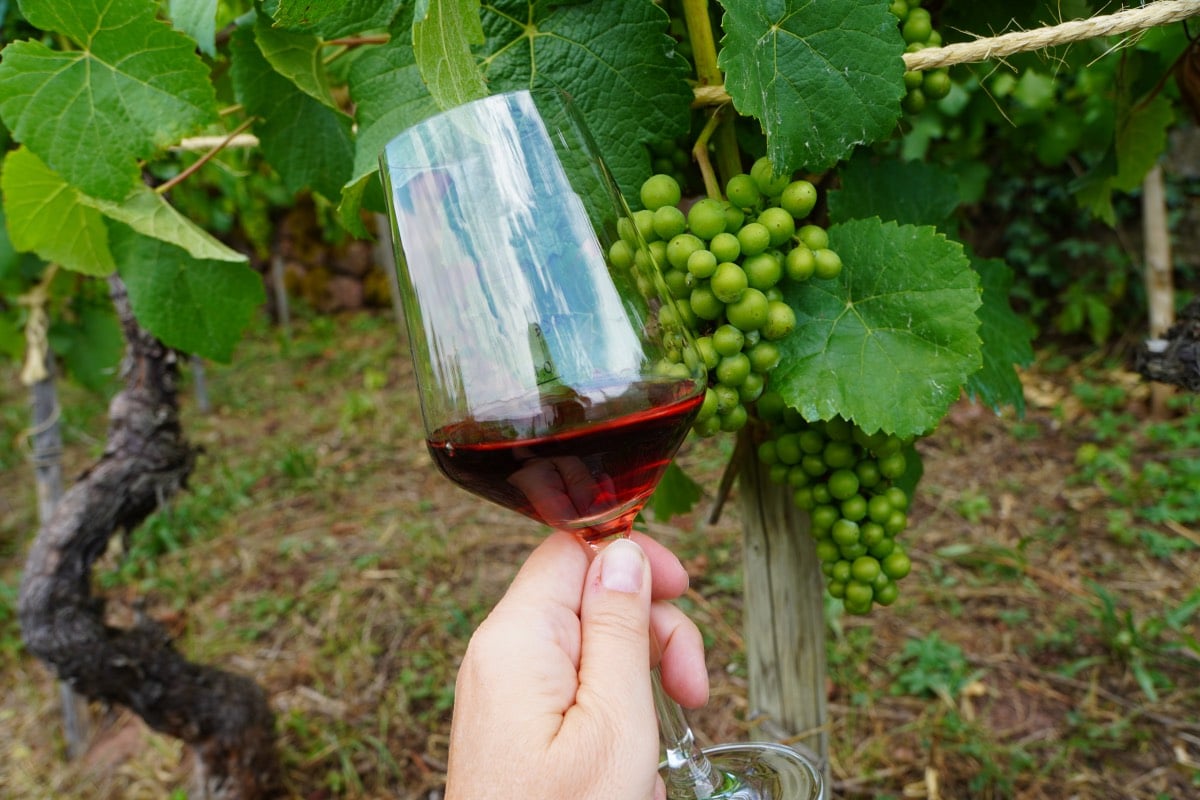
The red mixed set gives rise to the “Vinum Frankonium Purpureum”, which does not exist again in Germany. We were able to enjoy a tasting of the wine, appropriately named “Alter Satz”, directly in the vineyard.
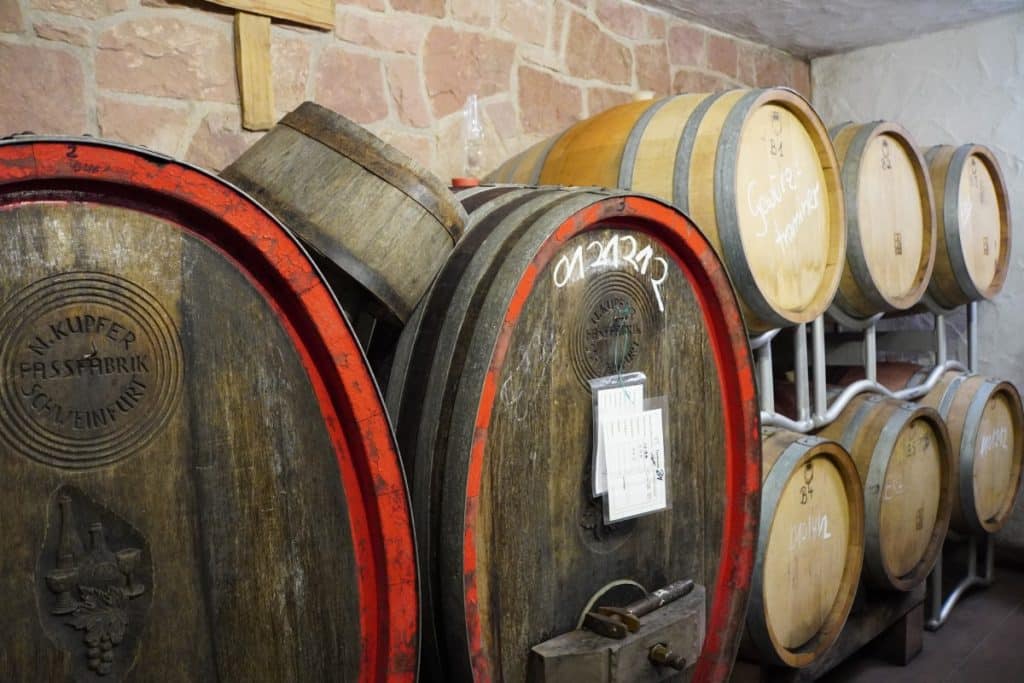
After visiting the museum vineyard, we could still visit the wine cellar of the winemaker. Of course, not without again enjoying samples of her excellent wine.
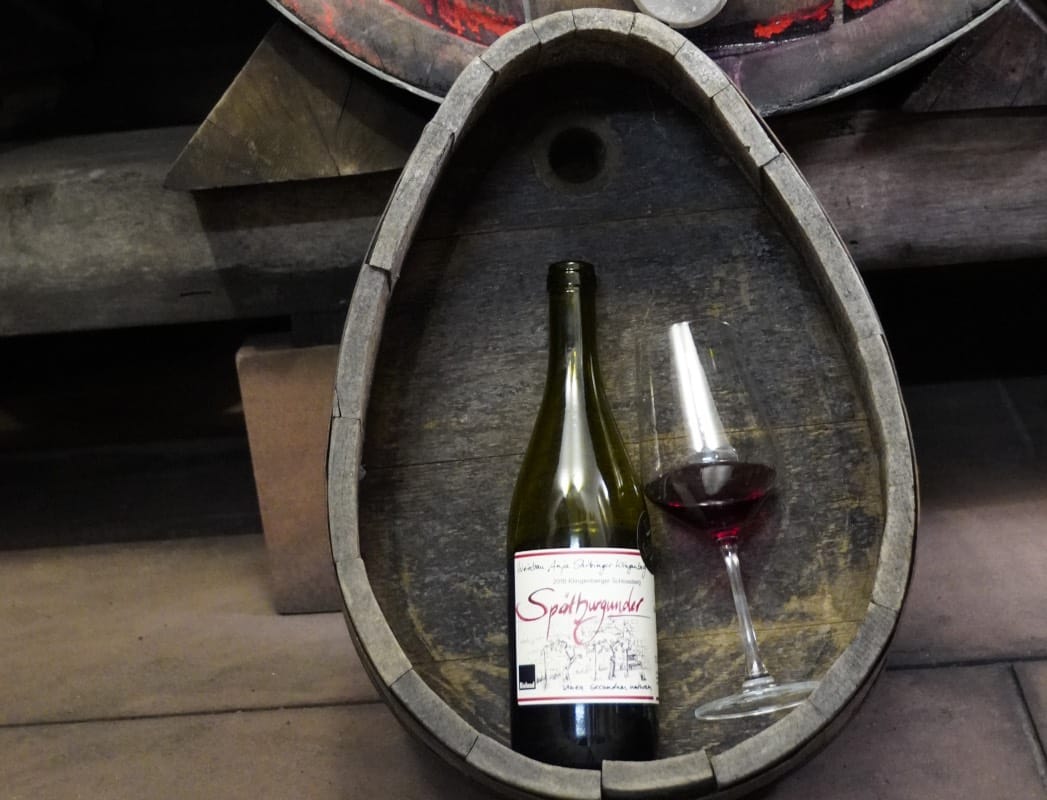
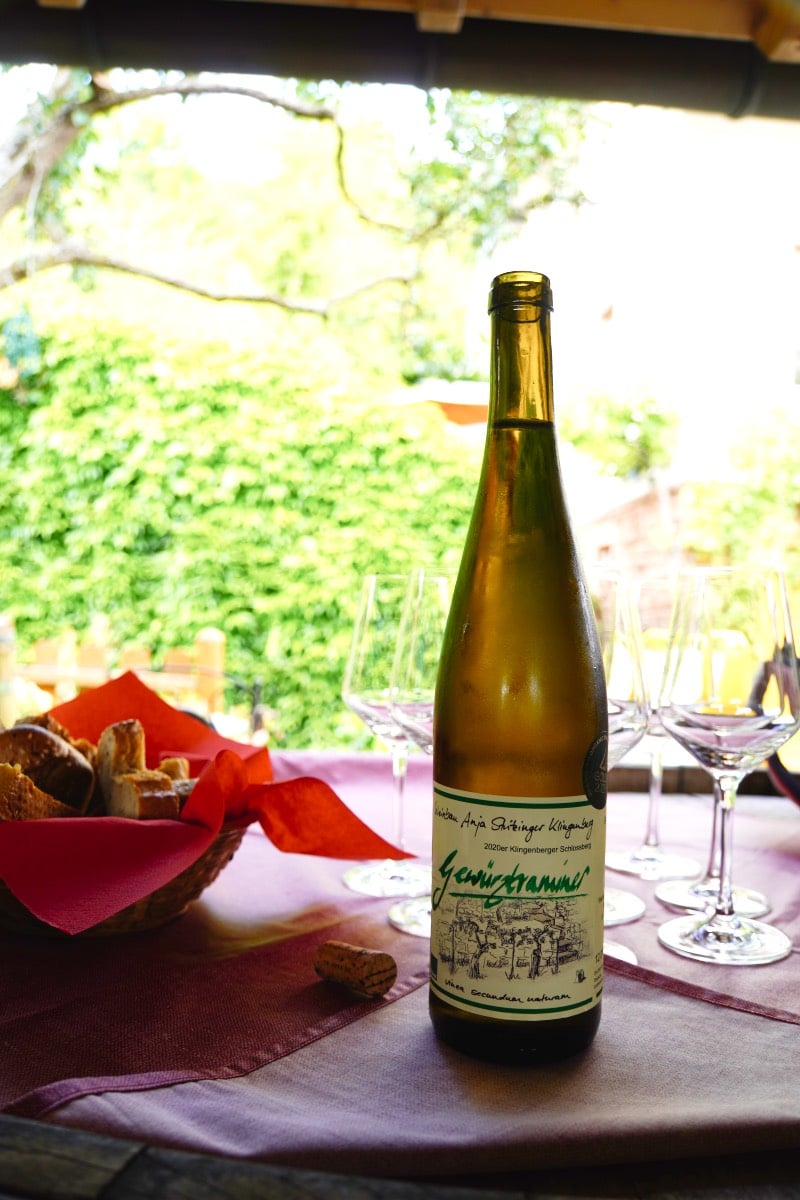
The visit to the museum vineyard in Klingenberg was an item on the agenda of a press trip with Churfranken e.V..
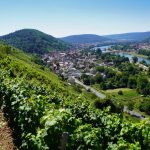
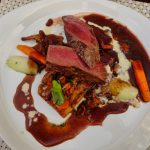
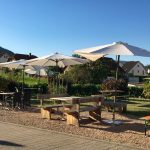
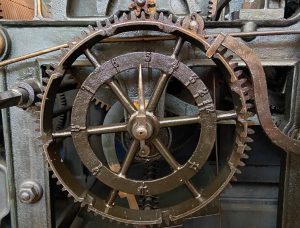
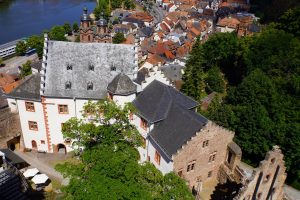
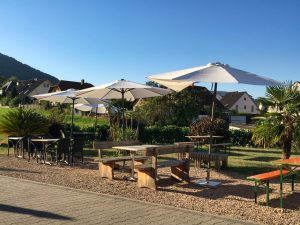
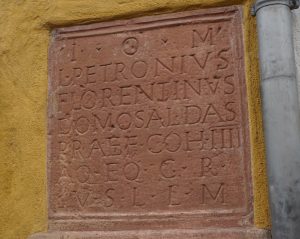
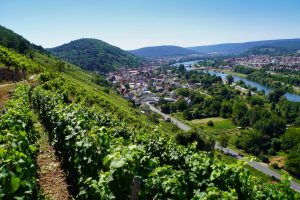
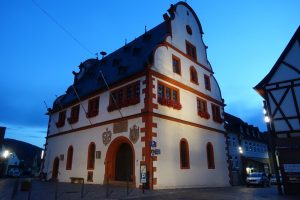
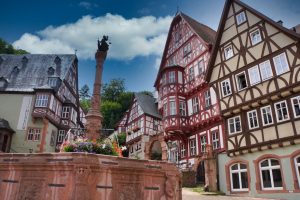
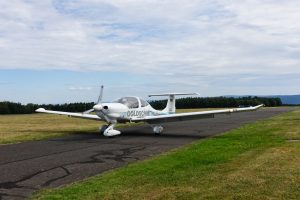
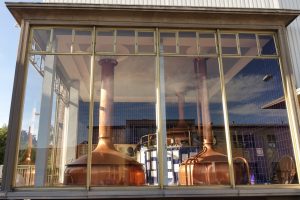
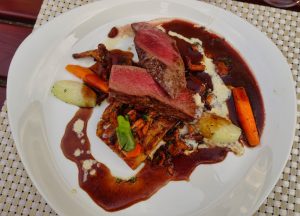
Leave a Reply